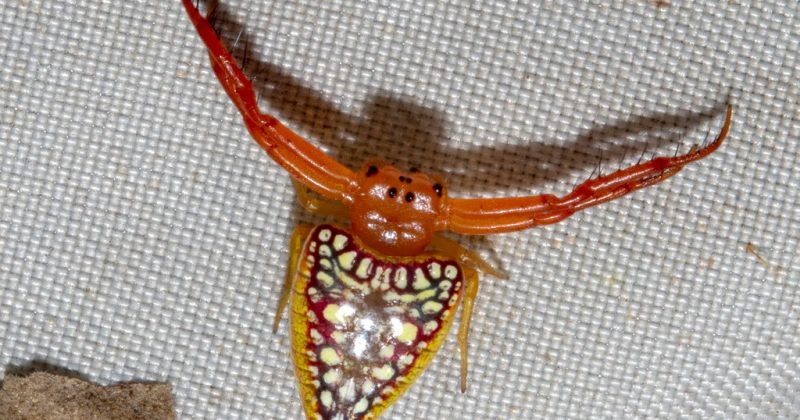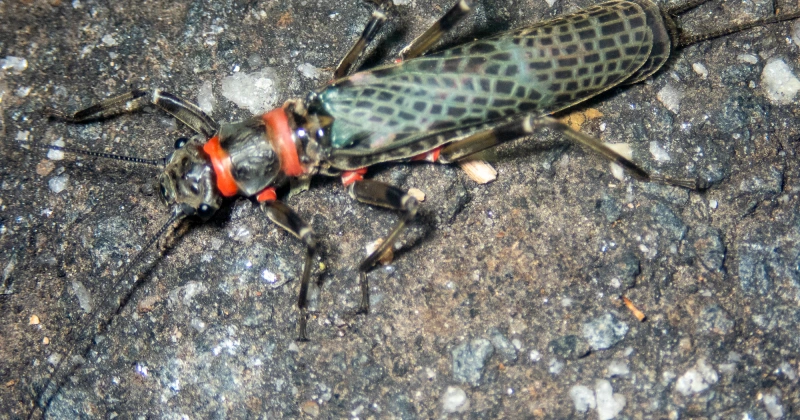On Saturday 18th of February, Friends of Tarra Bulga National Park held our annual invertebrate Survey (Bugblitz). Conditions were good with temperatures in the low to mid twenties. Around a dozen eager participants, including a few members of the Entomological Society of Victoria were ready to go bug hunting when I arrived at the Visitor Centre just after 2pm (a few minutes late). The Visitor Centre was a great place to start because while they were waiting, some observant people had noticed an abundance of insects that were roosting on the walls and windows, it was unusual to see a hundred or more fresh looking Geometrid moths. These moths turned out to be a species called Chrysolarentia lucidulata (Lucid moth), most of them were perched on verandah beams.
Once we had admired the visitor centre bugs we set off as a group along Lyrebird Ridge Track. We had a beating sheet with us to catch insects we tried to dislodge by lightly beating likely looking bushes. The sheet was unnecessary to start with because several sharp eyed children amongst our group were very skilled at spotting enough tiny creatures to keep everyone interested, including some young Katydids and a variety of caterpillars. We continued our survey on towards the suspension bridge and the group eventually thinned out as understandably the younger ones began to tire.
The beating sheet was then put into more use and continued to produce new and interesting observations. By the time we had completed a relatively short loop back to the visitors centre it was around 5.15pm (so we covered about 2km of ground in 3hrs). A few of us stayed around and had some dinner but apart from myself, all the afternoon crew then departed. Prior to Dusk Ken and Matt from Friends of Morwell National Park (as well as the Entomological Society of Victoria) arrived. I set up a light sheet in the Visitors Centre car park and Ken and Matt set up one at the top of the Bulga Picnic area road (which is currently closed). The wind had been a little breezy during the day, thankfully it become lighter in the evening, which meant less flapping for the light sheets. Out of the two light sheets for some reason the one at the Visitor Centre area attracted more activity. While I saw a little more sheet action, Matt and Ken were lucky enough to have a Boobook owl come and perch nearby to observe their activities. Ken and Matt kept their light going until just before 11pm and I continued recording until just after midnight.
It took a couple of weeks for all of the observations to get added to iNaturalist but overall we recorded at least 180 species of Arthropods, on the same activity last year we recorded 158 species (we had our light sheet in the Tarra Valley). As a result of our efforts we increased the number of Arthropod species recorded in the Park on iNaturalist from 745 to 776 (so we added 21 new species to the list). The following slideshow has some of the species recorded in Tarra-Bulga National Park for the first time on iNaturalist. To see all of the observations on iNaturalist from the day click here.


























































